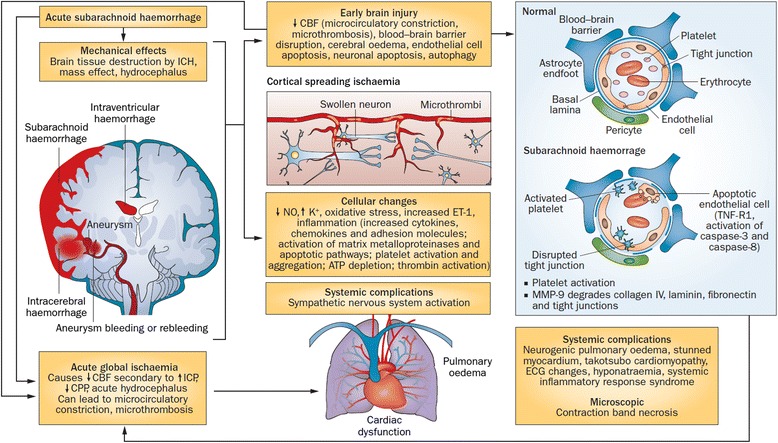Fig. 1.

Early pathophysiology of subarachnoid haemorrhage. Acute haemorrhage from an aneurysm can physically damage the brain and lead to acute transient global ischaemia. Transient global ischaemia secondary to increased intracranial pressure can also trigger sympathetic nervous system activation, leading to systemic complications. The contribution of each process to the pathophysiology is unknown, but transient global ischaemia and subarachnoid blood result in early brain injury, characterised by microcirculation constriction, microthrombosis, disruption of the blood–brain barrier, cytotoxic and vasogenic cerebral oedema, and neuronal and endothelial cell death. CBF cerebral blood flow, CPP cerebral perfusion pressure, ECG electrocardiographic, ET-1 endothelin-1, ICH intracranial haemorrhage, ICP intracranial pressure, MMP-9 matrix metalloproteinase-9, NO nitric oxide, TNF-R1 tumour necrosis factor receptor 1. First published in Nature Reviews Neurology [98]
